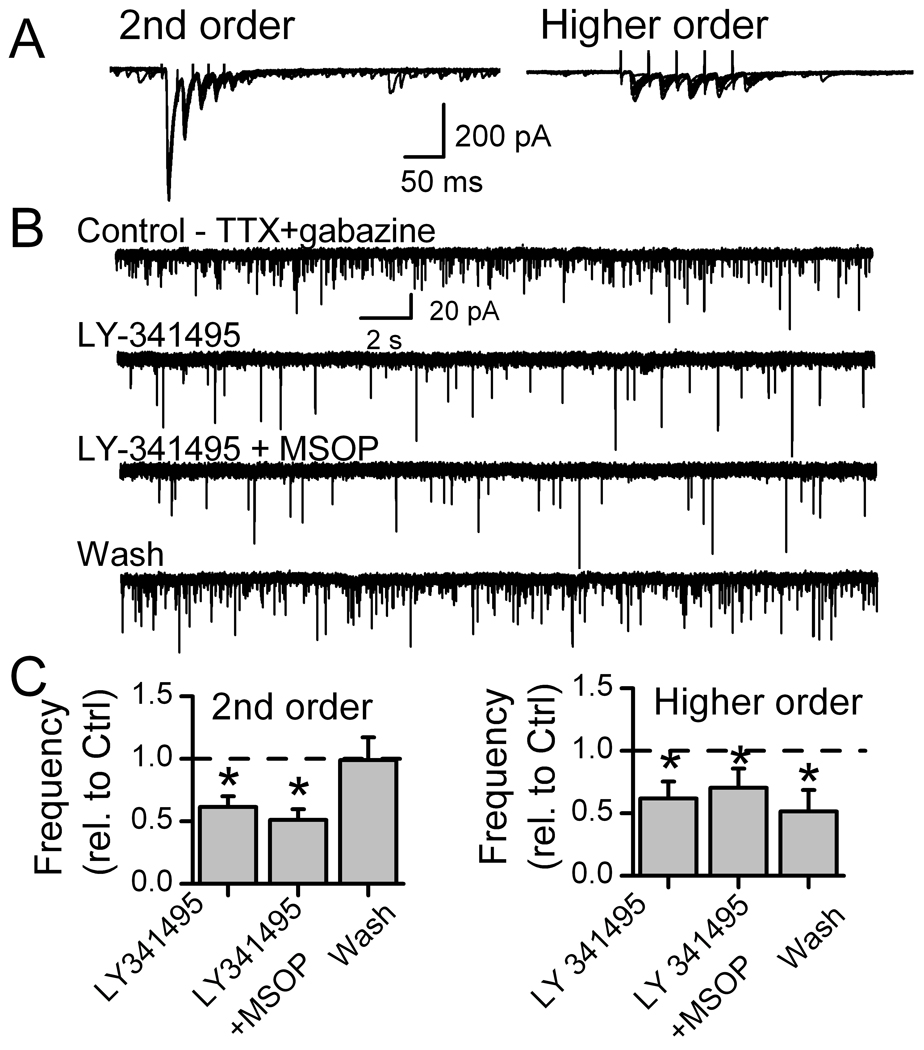Figure 4.
Group II or III mGluR blockade decreases autonomous or miniature glutamate release (mEPSC) in medial NTS neurons within brainstem slices. Recorded neurons were initially characterized by their solitary tract (ST) evoked EPSCs as second-order neurons with low (<200 µs) jitter (invariant latency), or as higher order (ST-EPSC jitter >200 µs). Panel A shows responses to ten successive ST shock bursts (5 shocks at 50 Hz each 6 s) in representative second-order neuron and higher order neurons. ST-EPSCs rapidly depressed in second-order NTS neurons (left, ten traces) but had high jitter, lower amplitude, little depression and synaptic failures of EPSC1 typical of higher order neurons (right, ten traces). In 1 µM TTX (B, TTX+gabazine), the second-order neuron of part A had substantial mEPSC activity. Gabazine (SR95531) was 3 µM. The mGluR II antagonist LY341495 (20 nM) substantially decreased mEPSC frequency and addition of mGluR III antagonist MSOP (200 µM) had little additional effect. On average (C), mGluR II or combined Group II and III antagonism decreased mEPSC rates in second-order NTS neurons (left, n=8) by almost half. On average in higher-order mNTS neurons (right, n=7), mGluR II and III antagonism also decreased mEPSC rates. (* is significantly different from control, p=0.01).

